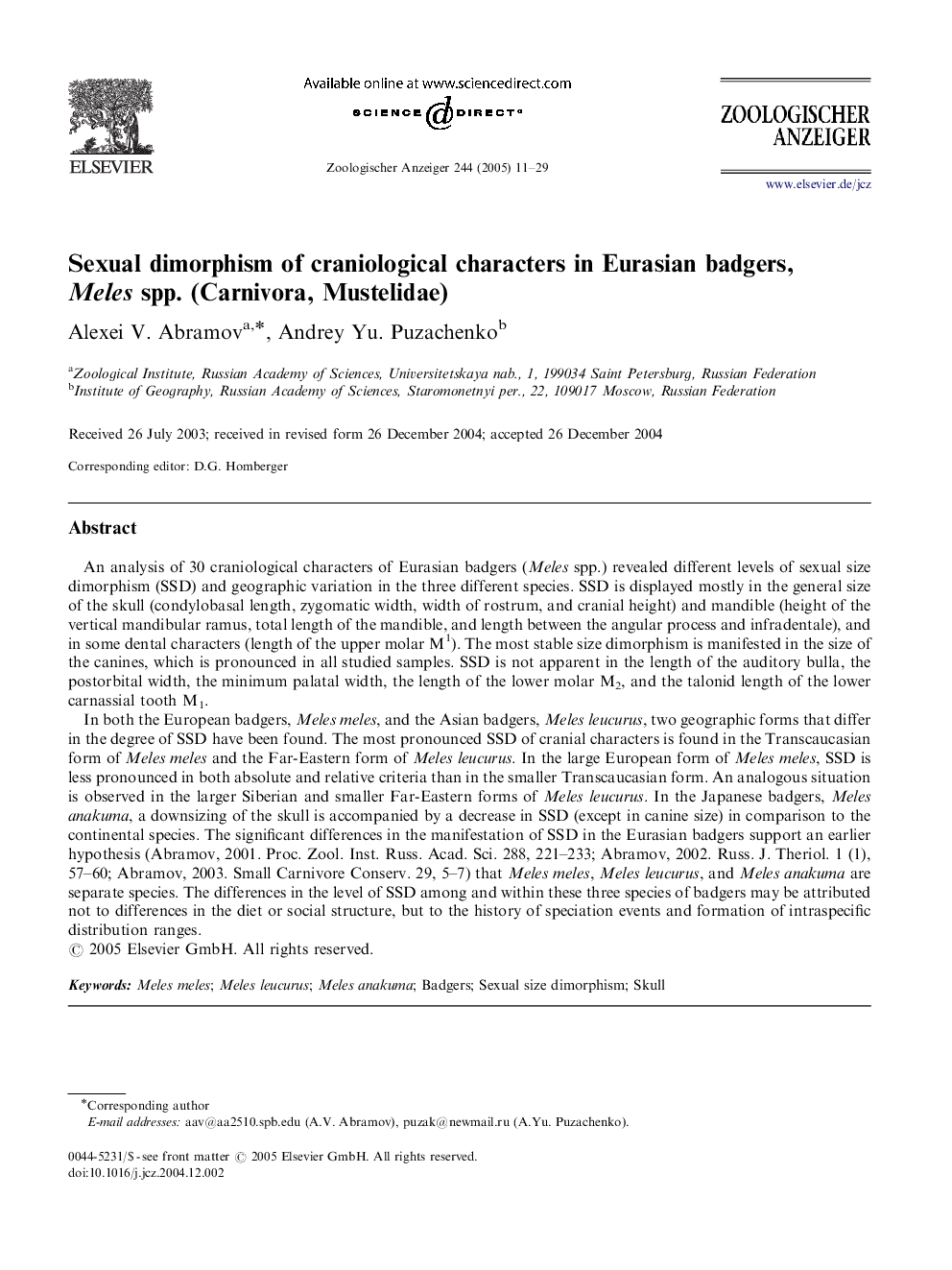| Article ID | Journal | Published Year | Pages | File Type |
|---|---|---|---|---|
| 9109876 | Zoologischer Anzeiger - A Journal of Comparative Zoology | 2005 | 19 Pages |
Abstract
In both the European badgers, Meles meles, and the Asian badgers, Meles leucurus, two geographic forms that differ in the degree of SSD have been found. The most pronounced SSD of cranial characters is found in the Transcaucasian form of Meles meles and the Far-Eastern form of Meles leucurus. In the large European form of Meles meles, SSD is less pronounced in both absolute and relative criteria than in the smaller Transcaucasian form. An analogous situation is observed in the larger Siberian and smaller Far-Eastern forms of Meles leucurus. In the Japanese badgers, Meles anakuma, a downsizing of the skull is accompanied by a decrease in SSD (except in canine size) in comparison to the continental species. The significant differences in the manifestation of SSD in the Eurasian badgers support an earlier hypothesis (Abramov, 2001. Proc. Zool. Inst. Russ. Acad. Sci. 288, 221-233; Abramov, 2002. Russ. J. Theriol. 1 (1), 57-60; Abramov, 2003. Small Carnivore Conserv. 29, 5-7) that Meles meles, Meles leucurus, and Meles anakuma are separate species. The differences in the level of SSD among and within these three species of badgers may be attributed not to differences in the diet or social structure, but to the history of speciation events and formation of intraspecific distribution ranges.
Related Topics
Life Sciences
Agricultural and Biological Sciences
Animal Science and Zoology
Authors
Alexei V. Abramov, Andrey Yu. Puzachenko,
